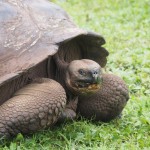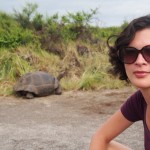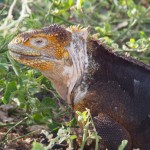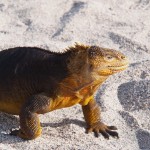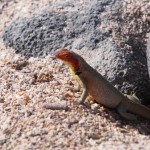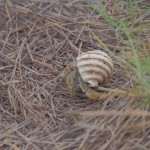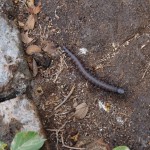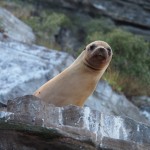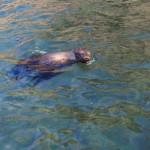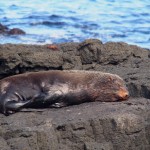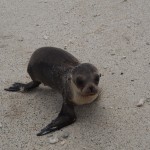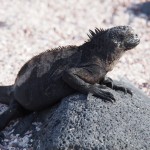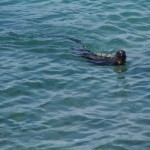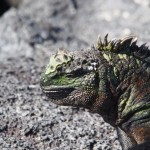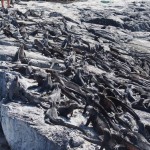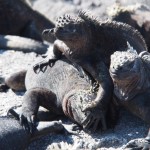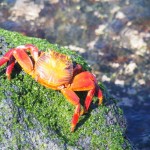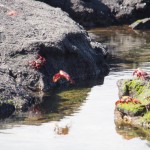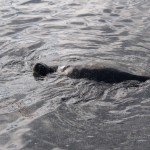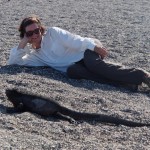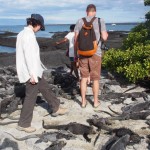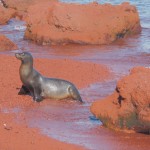We were greeted by sad news on the first day of our Galapagos cruise: Lonesome George, the islands’ most famous resident, had died in his sleep. No foul play suspected, but as we set sail, George was inhabiting a rather large freezer awaiting autopsy (as it turned out, he died of a heart attack at a ripe old age of – well, no one knows exactly, but definitely more than 150). For those of you who haven’t made his personal acquaintance (I did on my last visit to the islands some 15 years ago), Lonesome George is a giant tortoise, famous (and named) for being the sole surviving member of his species. Despite numerous attempts to persuade this, the Hugh Hefner of the tortoise world, into breeding with other vaguely similarly specied ladies, all failed meaning that with his death, an entire species vanishes. Admittedly a rather slow moving and on the face of it startlingly similar species to all those other giant tortoise species. But still.
The giant tortoises are definitely the star attraction when it comes to the Galapagos land animals and we were fortunate enough to see quite a few of them, both in the highlands (on private land – some guy counting his lucky stars that his otherwise entirely unremarkable little plot of land happens to be particularly beloved of the tortoise – cue $5 per person entry fee and the construction of a rather large gift emporium) and in the drier lowlands. It has to be said though – star attraction they may be, but they really don’t do much. One yawned once and the entire group of tourists snapped a photo.
Other and slightly more lively land animals are the lizard types – both little lava lizards and their older cousins, the rather prehistoric looking land iguanas. The lava lizards are the more exciting of the two, not least due to an uncanny habit of positioning themselves, carefully camouflaged, precisely where they suspect you are most likely to place your feet. Something tells me squishing an animal to death inside a world renowned national park may not go down too well.
Also seen: lots and LOTS of hermit crabs scuttling, jumping and water-walking about the place and one large centipede – about 8 inches long and apparently the only poisonous thing in the islands. Which surprises me not at all, it’s one of James’ special talents to find the only even vaguely dangerous thing within a local environment. Only surprised he didn’t pick it up. Or put it down my shirt.
- Remarkable live action shot of giant tortoise MOVING ITS HEAD
- Sneaking up on a half slumbering giant tortoise takes skill you know
- Dinosaur descendant! 8 feet long!!!
- OK, I lied. They’re actually about 18 inches long. Still, pretty prehistoric, huh?
- Lady lava lizard (I know it’s a her ‘cos she’s blushing)
- Maybe not the most unique animal, but hermit crabs are pretty cool
- James unerringly finds the most poisonous creature in the Galapagos

